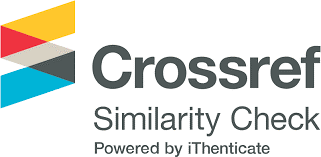Controlador Robusto Adaptativo Super-Twisting Sliding Mode por Modelo de Referência para Regulação das Correntes Injetadas em Redes Fracas por Inversores Trifásicos com Filtro LCL
DOI:
https://doi.org/10.18618/REP.2021.2.0001Keywords:
Filtro LCLAbstract
Neste artigo é apresentada uma nova estrutura de controle robusta adaptativa, resultante da união de um Controlador Robusto Adaptativo por Modelo de Referência e um Controlador Adaptativo Super-Twisting Sliding Mode, totalmente desenvolvida em tempo discreto. A estrutura resultante é aplicada em um inversor alimentado em tensão trifásico, conectado à rede elétrica através de um filtro LCL em um ambiente de rede fraca, ou seja, que apresenta significativo teor de indutância. A principal contribuição dessa nova proposta de controle é sua alta capacidade de adaptabilidade, mantendo as características de robustez dos controladores que o compõe. Assim, sua implementação é simplificada, pois pode ser projetado considerando um modelo de referência de primeira ordem e aplicado ao controle das correntes injetadas na rede. Para tal, negligencia-se a dinâmica dos capacitores do filtro LCL durante a modelagem da planta, considerando-a como uma dinâmica do tipo aditiva. Ainda, é apresentada uma análise de estabilidade e robustez do controlador proposto, em tempo discreto, considerando a planta como um todo, isto é, em presença de dinâmicas não modeladas. Além disso, para validar a viabilidade da estrutura de controle proposta, resultados experimentais são apresentados, onde se pode observar que a estrutura de controle proposta é capaz de regular a planta adequadamente mesmo em um ambiente de rede fraca, apresentando bom desempenho, com taxa de distorção harmônica de 2,81%.
Downloads
References
[ 1]V. C. Gungor, D. Sahin, T. Kocak, S. Ergut,C. Buccella, C. Cecati, G. P. Hancke, "Smartgrid technologies: Communication technologiesand standards",IEEE Transactions on IndustrialInformatics, vol. 7, no. 4, pp. 529-539, set. 2011. https://doi.org/10.1109/TII.2011.2166794 DOI: https://doi.org/10.1109/TII.2011.2166794
[ 2]M. Liserre, F. Blaabjerg, S. Hansen, "Design andcontrol of an LCL-filter-based three-phase activerectifier",IEEE Transactions on Industry Applications,vol. 41, no. 5, pp. 1281-1291, set. 2005. https://doi.org/10.1109/TIA.2005.853373 DOI: https://doi.org/10.1109/TIA.2005.853373
[ 3]P. J. D. O. Evald, R. V. Tambara, H. A. Gründling,"A Discrete-Time Robust MRAC Applied on Grid-Side Current Control of a Grid-Connected Three-PhaseConverter",ELECTRIMACS 2019: Selected Papers-Volume 1, vol. 604, pp. 45-50, abr. 2020. https://doi.org/10.1007/978-3-030-37161-6_4 DOI: https://doi.org/10.1007/978-3-030-37161-6_4
[ 4]M. Lindgren, J. Svensson, "Control of a voltage-sourceconverter connected to the grid through an LCL-filter-application to active filtering",in 29th Power Elect.Spec. Conf., vol. 1, pp. 229-235, maio 1998.
[ 5]J. R. Massing, M. Stefanello, H. A. Grundling,H. Pinheiro, "Adaptive current control for grid-connected converters with LCL filter",IEEETransactions on Industrial Electronics, vol. 59,no. 12, pp. 4681-4693, nov. 2011. https://doi.org/10.1109/TIE.2011.2177610 DOI: https://doi.org/10.1109/TIE.2011.2177610
[ 6]H. Alenius,Modeling and electrical emulation ofgrid impedance for stability studies of grid-connectedconverters, Master's thesis, TU, fev. 2018.
[ 7]M. Liserre, R. Teodorescu, F. Blaabjerg, "Stability ofphotovoltaic and wind turbine grid-connected invertersfor a large set of grid impedance values",IEEE Transon Power Elect, vol. 21, no. 1, pp. 263-272, jan. 2006. https://doi.org/10.1109/TPEL.2005.861185 DOI: https://doi.org/10.1109/TPEL.2005.861185
[ 8]R. A. Guisso, T. Vargas, M. L. Martins, H. L.Hey, "Sistema de Controle Multi-malhas para InversorMultiníveis Quasi-Z-Source com uma Única Fontede Entrada",Revista Eletrônica de Potência, vol. 24,no. 2, pp. 165-176, jun. 2019. https://doi.org/10.18618/REP.2019.2.0049 DOI: https://doi.org/10.18618/REP.2019.2.0049
[ 9]I. Gabe, H. Pinheiro, "Design and implementation of arobust current controller for VSI connected to the gridthrough an LCL filter",IEEE Transactions on PowerElectronics, vol. 24, no. 6, pp. 1444-1452, maio 2009. https://doi.org/10.1109/TPEL.2009.2016097 DOI: https://doi.org/10.1109/TPEL.2009.2016097
[ 10]R. V. Tambara, , H. Pinheiro, H. A. Gründling,"A digital RMRAC controller based on a modifiedRLS algorithm applied to the control of the outputcurrents of an LCL-filter connected to the grid",in15th European Conference on Power Electronics andApplications (EPE), pp. 1-8, IEEE, set. 2013. https://doi.org/10.1109/EPE.2013.6634360 DOI: https://doi.org/10.1109/EPE.2013.6634360
[ 11]L. T. Martins, M. Stefanello, H. Pinheiro, R. P.Vieira, "Current control of grid-tied LCL-VSI witha sliding mode controller in a multiloop approach",IEEE Transactions on Power Electronics, vol. 34,no. 12, pp. 12356-12367, mar. 2019. https://doi.org/10.1109/TPEL.2019.2905717 DOI: https://doi.org/10.1109/TPEL.2019.2905717
[ 12]R. Tambara, H. Gründling, "A discrete-time MRAC-SM applied to grid connected converters with LCL-filter",in IEEE 19th Workshop on Control andModeling for Power Electronics, pp. 1-6, jun. 2018. https://doi.org/10.1109/COMPEL.2018.8460061 DOI: https://doi.org/10.1109/COMPEL.2018.8460061
[ 13]A. Levant, "Higher-order sliding modes,differentiation and output-feedback control",International Journal of Control, vol. 76, no. 9-10, pp. 924-941, nov. 2003. https://doi.org/10.1080/0020717031000099029 DOI: https://doi.org/10.1080/0020717031000099029
[ 14]A. Msaddek, A. Gaaloul, F. M'sahli, "Comparativestudy of higher order sliding mode controllers",in 2014 15th International Conference on Sciencesand Techniques of Automatic Control and ComputerEngineering (STA), pp. 915-922, IEEE, dez. 2014. https://doi.org/10.1109/STA.2014.7086681 DOI: https://doi.org/10.1109/STA.2014.7086681
[ 15]B. Guo, , H. Dan, Z. Tang, B. Cheng, "A robustsecond-order sliding mode control for single-phasephotovoltaic grid-connected voltage source inverter",IEEE Access, vol. 7, pp. 53202-53212, abr. 2019. https://doi.org/10.1109/ACCESS.2019.2912033 DOI: https://doi.org/10.1109/ACCESS.2019.2912033
[ 16]S. Bouyahia, S. Semcheddine, B. Talbi, O. Boutalbi,Y. Terchi, "An adaptive super-twisting sliding modealgorithm for robust control of a biotechnologicalprocess",International Journal of Dynamics andControl, pp. 1-11, maio 2019. https://doi.org/10.1007/s40435-019-00551-8 DOI: https://doi.org/10.1007/s40435-019-00551-8
[ 17]P. J. D. O. Evald, R. V. Tambara, H. A. Gründling,"A Direct Discrete-Time Reduced Order Robust ModelReference Adaptive Control for Grid-tied PowerConverters with LCL Filter",Revista Eletrônica dePotência, vol. 25, no. 3, pp. 361-372, set. 2020. https://doi.org/10.18618/REP.2020.3.0039 DOI: https://doi.org/10.18618/REP.2020.3.0039
[ 18]R. W. Erickson, D. Maksimovic,Fundamentals ofpower electronics, Springer Science, jul. 2007.
[ 19]I. G. Macdonald,Symmetric functions and Hallpolynomials, Oxford university press, out. 1998. https://doi.org/10.1090/ulect/012/01 DOI: https://doi.org/10.1090/ulect/012/01
[ 20]P. Ioannou, K. Tsakalis, "A robust discrete-timeadaptive controller",in 1986 25th IEEE Conference onDecision and Control, pp. 838-843, IEEE, dez. 1986. https://doi.org/10.1109/CDC.1986.267486 DOI: https://doi.org/10.1109/CDC.1986.267486
[ 21]R. Cardoso, R. F. de Camargo, H. Pinheiro, H. A.Gründling, "Kalman filter based synchronisationmethods",IET Generation, Transmission &Distribution, vol. 2, no. 4, pp. 542-555, jun. 2008 https://doi.org/10.1049/iet-gtd:20070281 DOI: https://doi.org/10.1049/iet-gtd:20070281
Downloads
Published
How to Cite
Issue
Section
License
Copyright (c) 2021 Revista Eletrônica de Potência

This work is licensed under a Creative Commons Attribution 4.0 International License.















